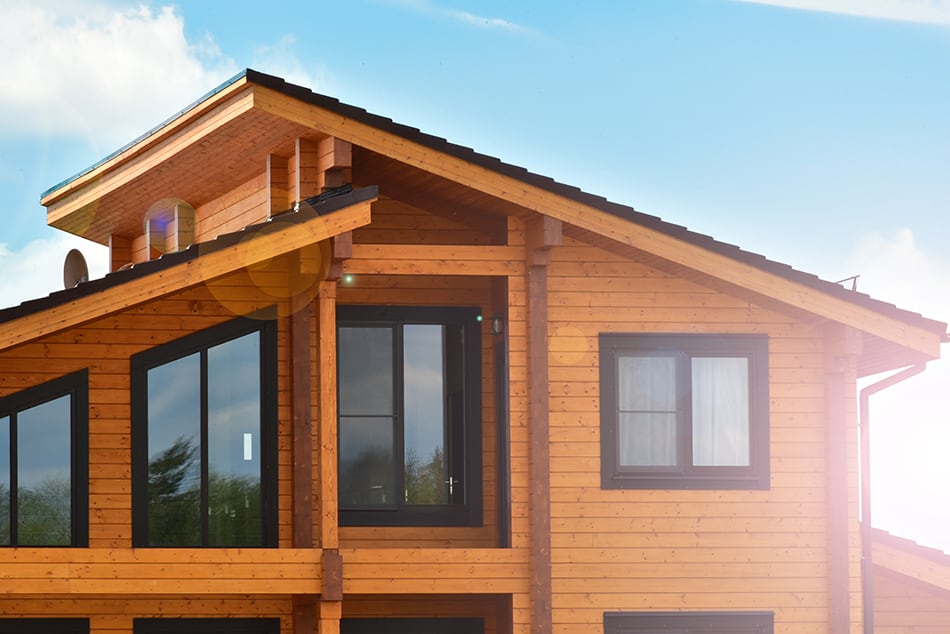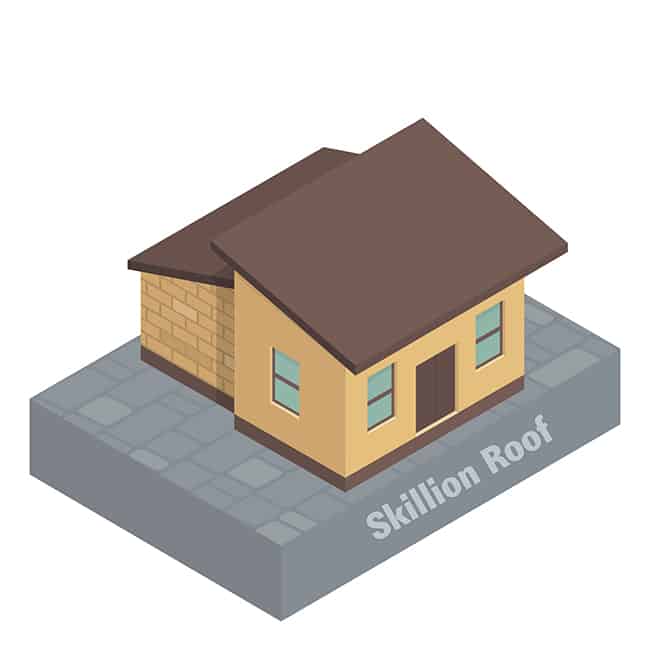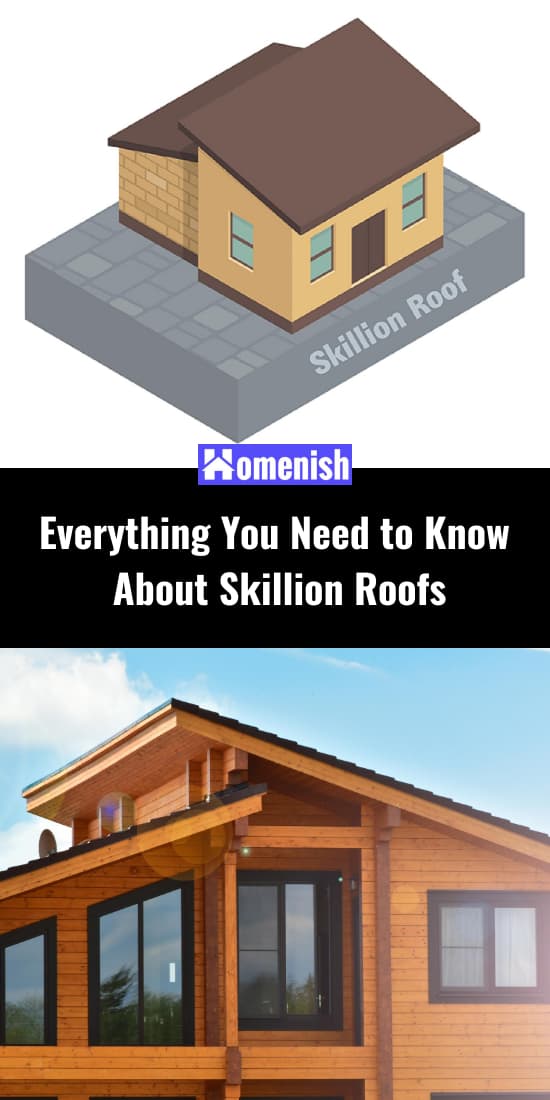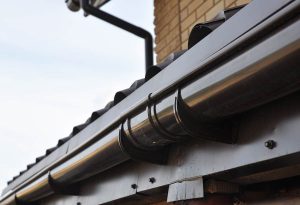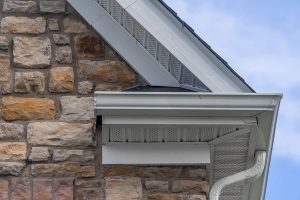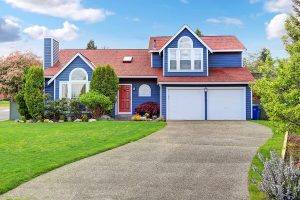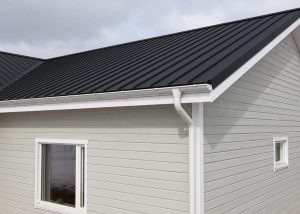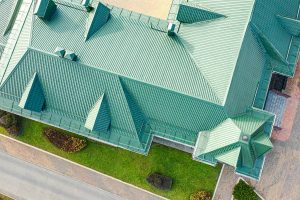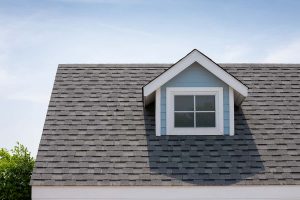A skillion roof is a durable, versatile, and high-performing residential architecture option. This type of roof can add sophistication and minimalism to any home, thus making it a very popular choice as a contemporary roof design.
If you’re interested in constructing a skillion roof, we’ve outlined all the important information about this type of roof, including its pros and cons, uses, installation cost, and variations.
What is a Skillion Roof?
If you’ve never heard of a skillion roof, here’s all you should know about this roofing style. A skillion roof design consists of only one single flat slope. It is an attractive option for those who embrace minimalist design. This type of roof shape is also referred to as a mono-pitched roof, shed roof, or lean-to roof.
The single-sloped surface of a skillion roof isn’t attached to any other roof surface, thus making it different from a gable roof. These easy-to-construct and unique roof designs are widely popular in home extensions and outbuildings as they don’t require any clamping to a roof’s fragment.
Origin of Skillion Roofs
The history of skillion roofs is somewhat unknown, but they are believed to have been inspired by Australian residential architecture in the middle of the 20th century. Unlike a standard flat roof, which became popular in mid-century architecture, a skillion roof boasts a significant slope. This type of roof is often seen in suburban blocks of Australia as a unique architectural design. You will also see this iconized roof style on sheds, patio roofs, and carports.
In modern times, skillion roofs are mostly found in rural Australian homes and even barndos. Increasingly, however, these high-performing roofs are finding their way in suburban roof constructions across contemporary homes in many parts of the world.
Skillion Roof Uses
The following is a list of all the major uses of skillion roofs:
- To provide water drainage due to their steep pitch
- These roofs can be personalized based on the individual’s preference
- Fewer components are required to build this type of roof
- It can be used as an extension
- Because of its long slope, the roof dispenses more natural illumination
- It provides a broader exterior on the upper part of the roof
- Building this type of roof can be done in the quickest time
Skillion Roof Advantages
Better water drainage: skillion roofs can drain water effectively, so if you want to avoid leaks, it is better to opt for this type of slope roof over a flat roofing system.
Easy to build: constructing a skillion roof requires fewer materials and it is easier to build than other roof styles. However, the construction of this type of roof still requires precision and accuracy.
Modern design: the simple look of skillion roofs is the main reason behind their popularity among people who want a minimalist style roof. The modern and clean design of these roofs not only looks attractive but also gives you more freedom to plan your landscaping ideas.
Elegant yet simple: thanks to the angled flat surface of these roofs, they attract attention and provide an elegant yet simple appeal.
Affordable: Skillion roofs are inexpensive and easy to construct. Their materials are cheap, thus making this type of roof ideal for those on a limited budget.
Longer lifespan: when built using high-quality and durable materials, skillion roofs will offer a longer lifespan than flat roofs or even gable roofs. Just make sure you use weather-resistant materials to withstand extreme temperatures.
Energy efficient: because a skillion roof features a slightly sloping angle, it is perfect for installing solar panels to save energy in the long term.
Skillion Roof Disadvantages
No attic space: one of the most notable drawbacks of skillion roofs is their lack of attic space. If you prefer extra storage in your roof space, this type of roof design won’t be suitable for you. The reason for the lack of attic space is due to the roof’s angle being tighter than gable and hip roofs.
Prone to wind damage: just like hip and gable roofs, skillion roofs are also susceptible to high wind or hurricane damage. To overcome this problem, you should consider building multiple roof slopes to make the main roof stronger. To do this, make sure you hire expert roofers in order to enjoy a longer-lasting roof.
Cost of Building a Skillion Roof
Since skillion roofs are mainly built on rafters, they cost much less than other roof types that feature multiple slopes. A general estimate of the cost is anywhere between $6,000 and $12,000 depending on the materials used to build the roof.
If you opt for shingles to cover your skillion roof, the cost will be significantly less than a roof covered with metal. There is also the slope of the roof as well as the number of beams and rafters that equally affect the final cost.
To keep the cost of building a skillion roof as low as possible, you may want to build it yourself instead of hiring roofers. If so, keep reading for more details on how to build this type of roof.
How to Build a Skillion Roof
Skillion roofs are usually standalone roofs, which means they don’t need to be attached to any part of the roof. These roofs are easier to construct as they don’t have varying pitches or slopes.
Some of the primary components for building a skillion roof include metal, asphalt, or wood shingles. The finishing substances can also include standing seam metal sheets to further protect the roof from depletion.
When constructing such a roof, the main consideration you need to take into account is the roof’s degree of pitch and leveling. You must also pay attention to the wind direction to ensure the gradients and angle of the roof are reasonable enough to prevent storm damage. As an added improvement, consider metal cladding to achieve the necessary rises and falls of the roof.
Rafters are one of the most important sloping components that form the skillion roof’s pitch. These are used to provide additional support to the roof as well as to transfer the weight to the structure’s outer wall for even more durability and support. You may also need a beam to prevent the rafters from failing. This will provide added support along the length of the rafter.
When talking about support beams, it is important to choose the correct thickness and think about the best placement of the beams. In skillion roofs, wooden beams are usually placed at horizontal 90-degree angles along the rafters. These beams are used to strengthen the construction and provide additional support to the rafters.
Portal frames also add to the sophisticated design of skillion roofs. These frames contain a series of trusses that serve as extra structural support. Portal frames can be made from wood or steel, depending on the level of strength required in the roof.
With that in mind, watch this quick video on how to build a skillion roof.
Skillion Roof Variations
There are several variations to skillion roofs, with the circular or oval-shaped designs being the most popular. The circular-shaped roof design has a curved structure that uses a soft ridge curve instead of the usual sharp edge. This skillion roof style is most fashionable because of its aesthetic appeal and the ability to increase the roof’s wind resistance.
Another popular option for a skillion roof variation is the butterfly skillion, which consists of two sloping panels angling downwards in opposite directions towards the center of the roof. The name butterfly roof refers to the impression of wings that the angled slopes give. This roof style allows effective rainwater collection, thus making it ideal for areas with high rainfall.
The other common variation is the mono-pitched or split roof shape that combines both skillion and gable roofing design in one structure. The mono-pitched variation consists of a single roof that goes in one direction. The split skillion, on the other hand, uses two separate roofs that are non-intersecting.
Lean-to skillion roofs are another angled type of flat roof that is commonly used on modern homes, porches, and sheds.
Is it Cheaper to Build a Skillion Roof or a Flat Roof?
When deciding on the best roof type for your home or outbuilding, you should always consider the long-term factors, such as the weather conditions and the quality of the roofing material you use. In the case of comparing flat roofs to skillion roofs, flat roofs come out as the slightly cheaper option to build, but they do have more disadvantages than skillion roofs. Lack of water drainage, for example, is one major drawback to flat roofs, whereas skillion roofs have a slope that won’t collect water and develop leakage problems.
If you are still undecided about whether to build a flat roof or skillion roof, research the price of the materials as well as the ongoing maintenance and repair of flat roofs. You will then find that skillion roofs are almost certainly more cost-effective than flat roofs.
